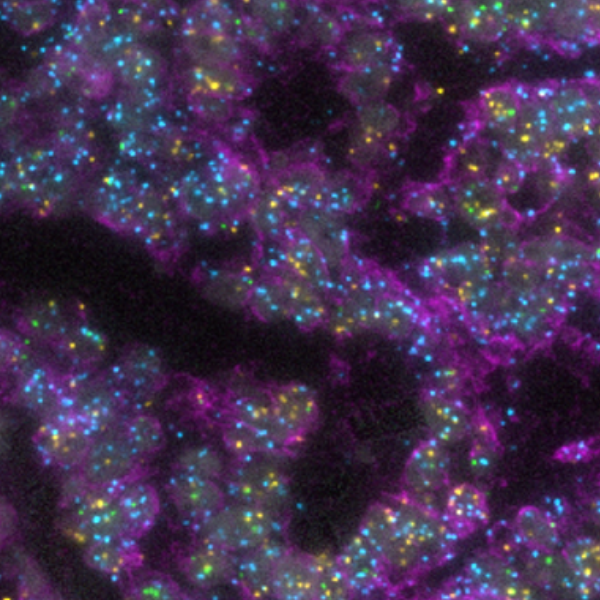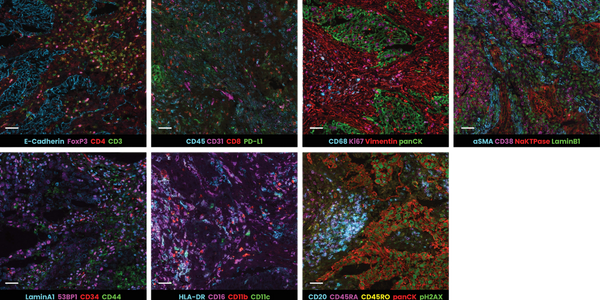press-releases
Lunaphore announces new data highlighting broad clinical potential of COMET™ platform at the Society for Immunotherapy of Cancer (SITC) 37th Annual Meeting
Date


LAUSANNE, Switzerland – November 10, 2022 – 4:00 pm (CET)– Lunaphore, a Swiss life sciences company developing technology to enable spatial biology in every laboratory, today announced new data showcasing the potential of spatial biology tools to provide deep biological insights in a variety of clinical settings. The data will be presented at the 2022 Society for Immunotherapy of Cancer (SITC) 37th Annual Meeting, and focuses on the unique flexibility and capabilities of the COMET™ platform in various applications. The new studies show the detection of difficult-to-target biomarkers, automation for more efficient lab workflow, and the performance of sequential immunofluorescence (seqIF™) assays to support and accelerate discovery studies across multiple research fields.
Lunaphore scientists present a poster, Mapping the Tissue Composition with Hyperplex Immunofluorescence on Delicate Samples (Almeida, P. et al.), detailing the COMET™ platform’s ability to perform automated hyperplex assays for 32 biomarkers on fresh frozen sections tissues slides without user intervention. This method combines staining quality with tissue preservation with a high level of reproducibility. The novel sequential immunofluorescence (seqIF™) approach addresses the current harsh, laborious, and time-consuming procedures used in manual protocols, which can damage tissue and limit the use of immunofluorescence-based hyperplex assays.
In this study, a seqIF™ protocol was automated and optimized on COMET™ for both human and mouse frozen tissue sections. Results proved the feasibility of performing automated hyperplex assays on a variety of delicate frozen samples with high-quality results. Lunaphore’s microfluidics-based technology enabled researchers to investigate the tissue composition at a single-cell level with up to 40 different biomarkers of choice, showing that the COMET™ platform is capable of overcoming current limitations in tissue spatial biology.
“We are thrilled to present data at SITC this year, adding evidence that underscores the broad potential of the hyperplex COMET™ platform in both research and clinical settings,” said Ata Tuna Ciftlik, Ph.D., Chief Executive Officer of Lunaphore. “Visualizing the tissue architecture within the tumor microenvironment (TME) has emerged as a crucial step to better understand tissue biology. Applying the seqIF™ technology for such purpose allows maintaining the integrity of the tissue and output even for delicate samples, enabling researchers to harness learnings to develop future therapeutic interventions that can improve patient outcomes.”
Additionally, Lunaphore presents a poster called Signal Amplification Strategies for in Situ Detection of Low-Expressed Markers in Multiplex Immunofluorescence (Bordignon, P et al.) Currently, sequential immunofluorescence (seqIF™) on COMET™ offers linear amplification and provides a wide dynamic range of highly expressed markers with no saturation. With seqIF™ it is possible to detect a vast number of lineage and functional markers. In this study, additional signal amplification techniques are tested on COMET™ and could be optionally used by users with a preference for a qualitative and non-linear evaluation. Signal boosting on COMET™ could be integrated into a fully automated seqIF™ workflow for hyperplex analysis, and it could widen the scope of new applications involving the detection of complex markers in the immune-oncology field and beyond.
“Assays that comprehensively map the TME have become essential in understanding the drivers of multiple diseases, including cancer. Until now, large-scale implementation of these assays was hampered by lack of automated and user-friendly workflow solutions,” said Diego G. Dupouy, Ph.D., Chief Technology Officer at Lunaphore. “Our study shows great promise for the automated detection of RNAs and proteins of pivotal biomarkers within the TME, providing a powerful new tool to map tissue in its spatial context more precisely and simply than traditional technologies.”
In addition to these posters, Lunaphore also presents several data sets in partnership with academic and industry research institutions at SITC’s 37th annual meeting, highlighting the company’s collaboration and leadership in the spatial biology field. Lunaphore is focused on fostering groundbreaking research with the goal of moving this revolutionary technology and the insights it provides into clinical use, where it can benefit patients’ lives in the future.
To learn more about Lunaphore’s presentations and activities at the Society for Immunotherapy of Cancer (SITC) 37th Annual Meeting, please visit: https://lunaphore.com/our-events/sitc-2022/
About Lunaphore
Lunaphore Technologies S.A. is a Swiss company born in 2014 with the vision of enabling spatial biology in every laboratory. Lunaphore has developed a game-changing chip technology that can extract spatial proteomic and genomic data from tumors and transform any simple assay into multiplex spatial biology without complexity. Lunaphore empowers researchers to push the boundaries of research to ultimately develop the next generation personalized therapies. For further information on Lunaphore and its products, please visit www.lunaphore.com.
About COMET™
COMET™ is a fully automated, sequential immunofluorescence (seqIF™) instrument, able to perform hyperplex staining and imaging, producing high-quality data in a robust and reproducible manner. With superior tissue profiling capabilities, the system allows multiplex analysis of up to 40 different spatial markers per tissue slide without human intervention. COMET™ has a wide range of research applications, allowing for a dramatic improvement in the understanding of disease pathology in areas such as immuno-oncology, neuroscience, and infectious diseases. To learn more about the COMET™ platform, please visit: https://lunaphore.com/products/comet/.
For further information contact:
Irene Tamayo
Lunaphore Corporate Communications
Email: [email protected]